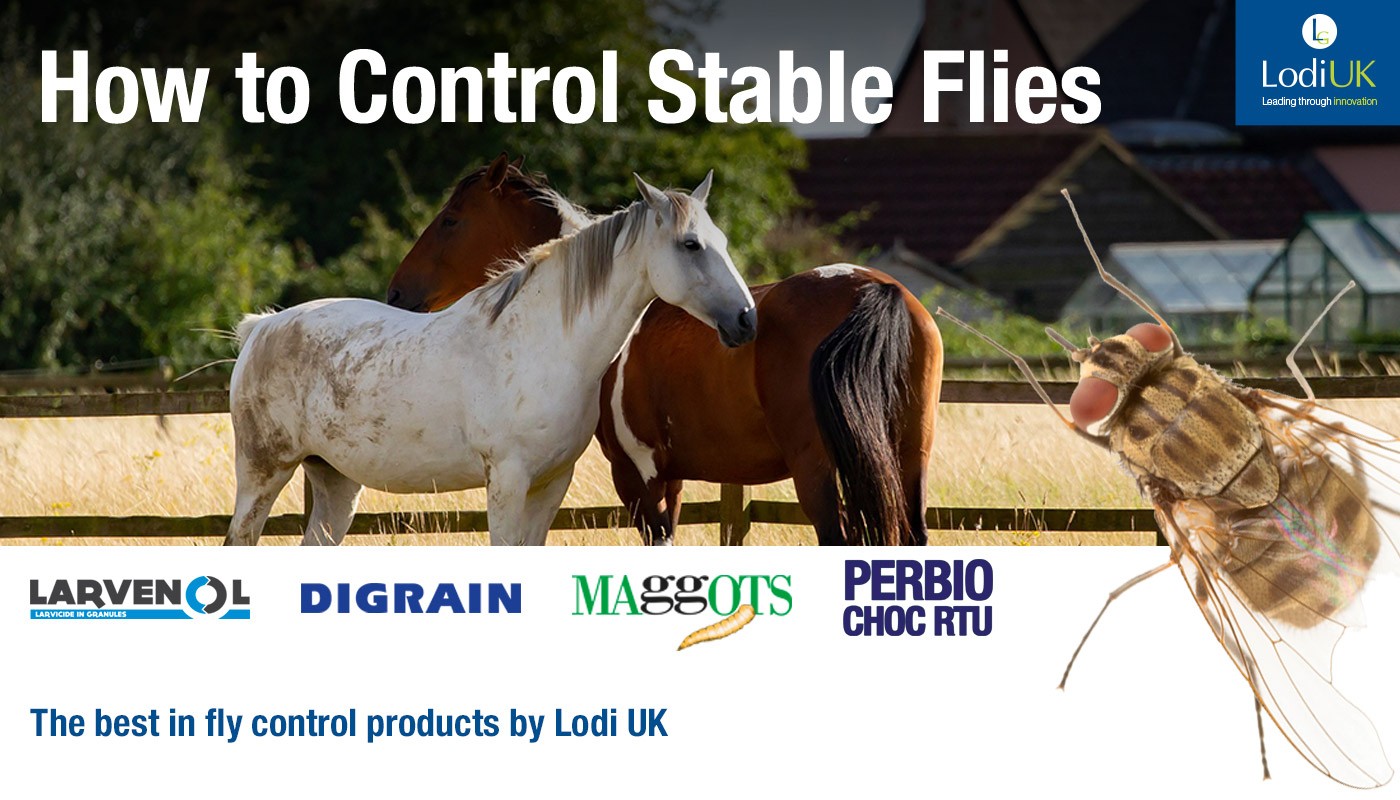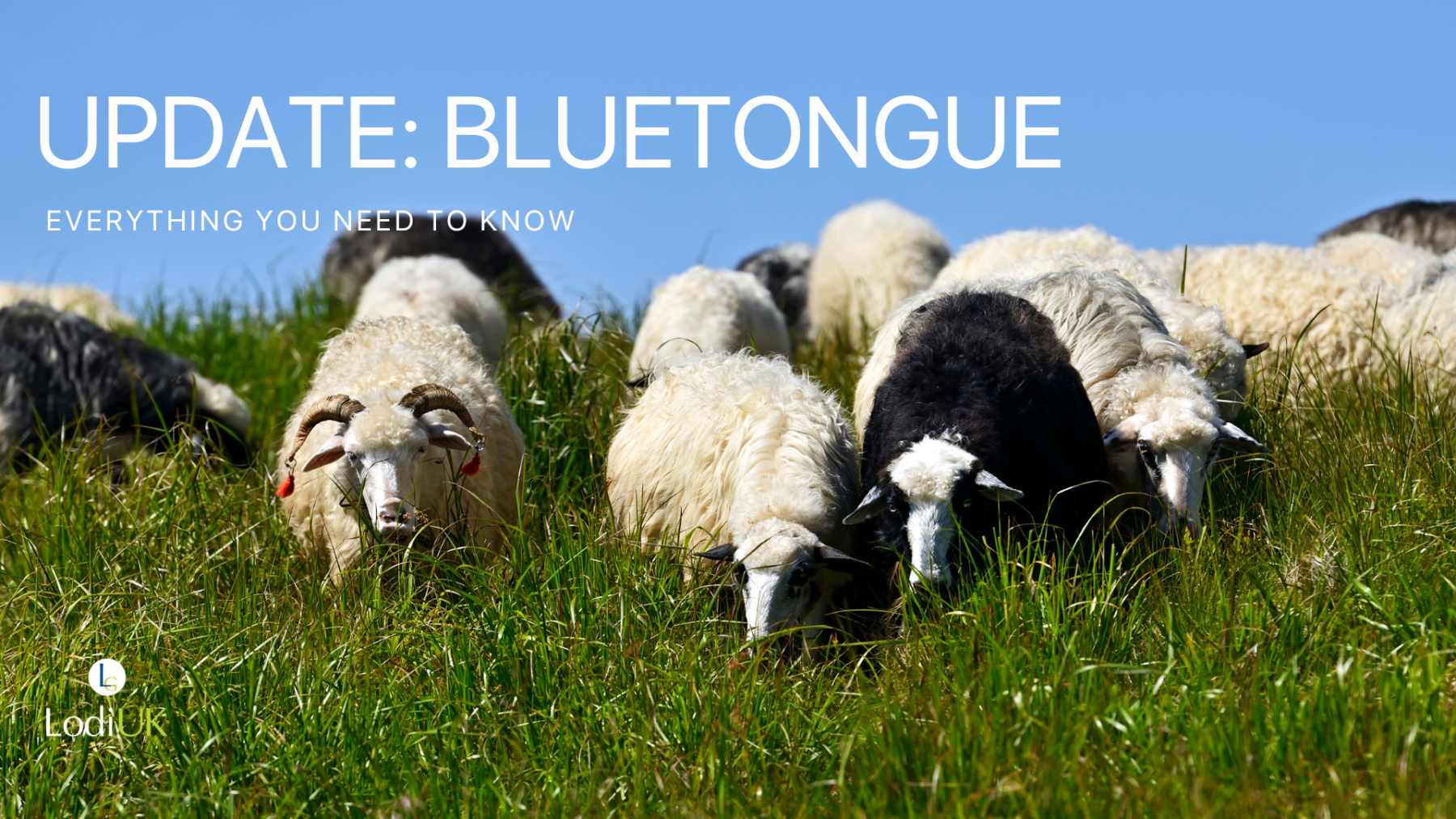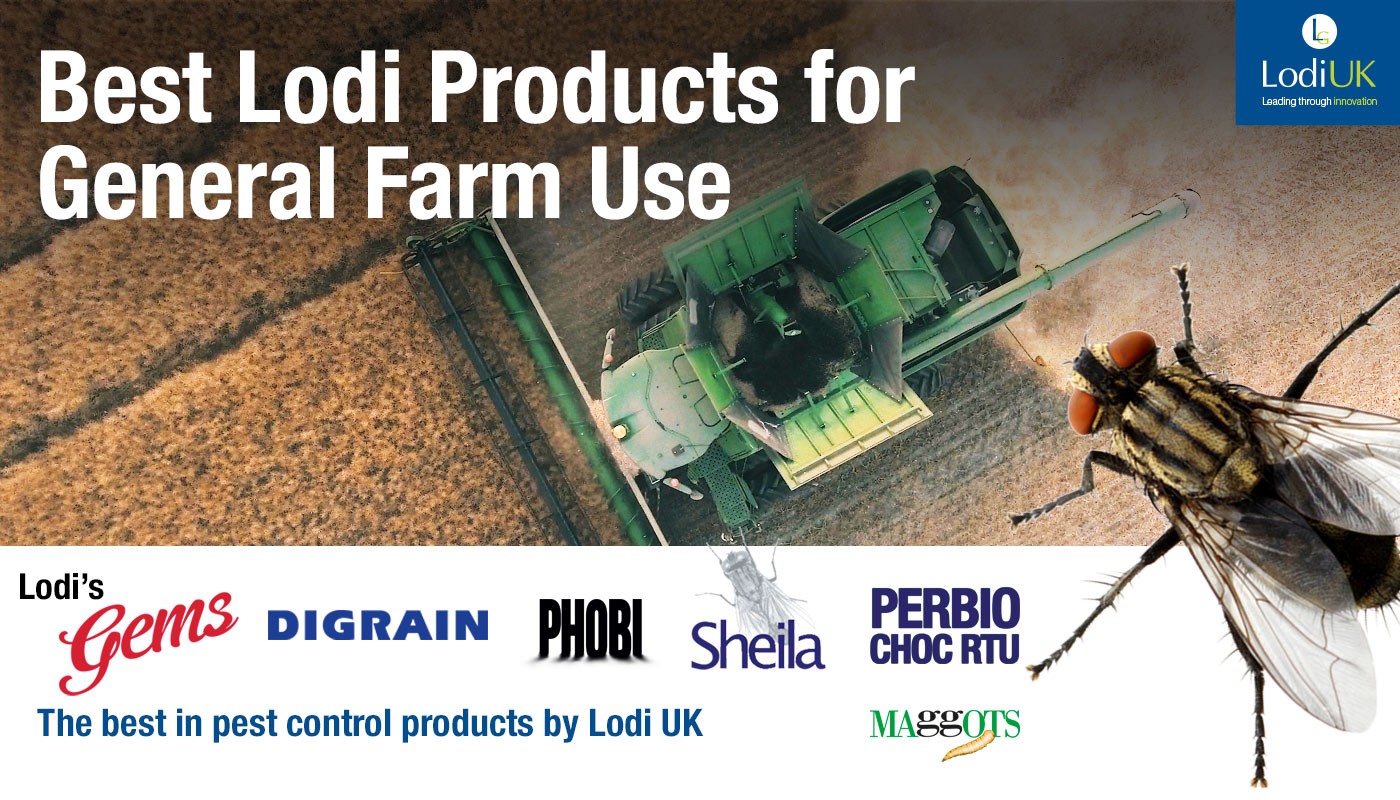
If you have read Lodi’s recent blog on fly control, Now Is The Perfect Time To Start Fly Control On Farm, you will know that there are over 7,000 species of flies in the UK. This blog will cover one of the banes of the equestrian world – the stable fly.
What Are Stable Flies?
Stable Flies (Stomoxys calcitrans) look very similar to house flies, but are slightly smaller, wider and have a spotted or striped abdomen. Their Latin name means ‘sharp mouth’ and ‘kicking’. Stable flies bite people and animals & suck their blood. They typically feed once per day, either in the early mornings and late afternoons. Females can lay between 10 and 12 batches of eggs in their 20-day lifetime – with up to 80 eggs in each batch! They lay these eggs in rotting material, such as old feed, muck heaps and bedding. Much like houseflies, the breeding cycle of stable flies is dependent on temperature, moisture and the availability of nutrients. Under the ideal conditions, with good food availability, ideal moisture levels and temperatures of 27°C, the life cycle can take 2 weeks, although this can be as long as 78 days. Research from Texas A&M University has suggested that the leftovers from one round bale can produce over a million stable flies when left in the field.
Despite their name, stable flies can cause trouble for people and all kinds of livestock, although horses are their preferred targets. They tend to bite the legs, stomach and teat area. Stable flies can carry anthrax and equine infectious anaemia, both of which can be fatal. Stable flies are an intermediate host for Habronema muscae, a nematode that lives in horses’ stomachs. We are fortunate to live in the UK, with its’ temperate climate, as the nematode are fairly rare – although, with the increasing temperatures, they may become more common. They can cause weeping sores on the lips, face and legs. Fly bites also cause irritation and distress to horses in the field.
How can you reduce stable fly bites?
- Avoid turn out during the early mornings and late afternoon. Bringing in during the day will also get your horses out of the hot midday sun!
- Turn out in a good quality fly rug - especially ones with a section that covers the belly.
- Using a strong fly spray will prevent the flies from biting and feeding on your horses. Some fly sprays, like citronella, work by masking the scent of the horses and others work by repelling the flies. There are also insecticidal fly sprays that kill flies that come into contact with the residual that stays on the horse.
How can you control stable flies?
Although stable flies are a nuisance, luckily, there are many ways to control their population.
- Poo pick your fields regularly.
- Remove and dispose of any old organic matter, like old hay or straw bales. As we are coming to the end of winter and horses can move towards 24/7 turnout, now is the time to spring clean their stables, it’s the perfect time to spring clean – especially if you have been deep-bedding. Leaving the stable to air and dry completely will prevent the larvae from feeding.
- Although it is better to remove the breeding ground, don’t worry if you can’t. It may provide the ideal place for beneficial organisms, like predators, parasites, and other stable flies' natural competitors. These may kill and feed on the eggs, larvae and pupae of the stable fly. It is also possible to buy parasitic wasps on the internet which will lay their eggs in the pupae of the stable fly, killing them.
- If you can’t remove the organic material, i.e. muckheaps, sprinkling the sites with a larvicide will prevent any larvae present from becoming adults. Larvenol can be sprinkled directly onto muck and you can spray Maggots Granular Larvicide onto muckheaps. You will begin to see a reduction in stable fly numbers in as little as two weeks!
- Use Digrain Fly Reel Glue Rolls to trap adult flies. Hanging fly papers effectively control stable flies as they choose to rest on vertical surfaces, especially after their meals. The fly papers are impregnated with fly sex pheromones and are coated in special attractive glue.
- Using an insecticide in the areas where the stable flies rest will also help to control the population. These are different to the insecticidal fly sprays. Perbio Choc is the strongest oil based ready to use insecticide available to farmers and equestrians. It has a quick knockdown and its’ three month residual will protect your horses over the summer months.
NEED MORE INFORMATION?
If you have any questions about pest control products, email us at contact@lodi-uk.com and one of the experts on our team will help!
.jpg)





